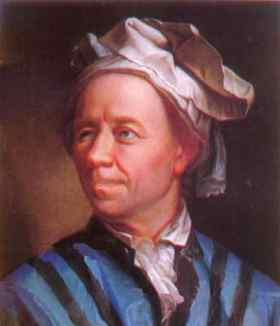 Leonhard Euler, 1707-1783 |
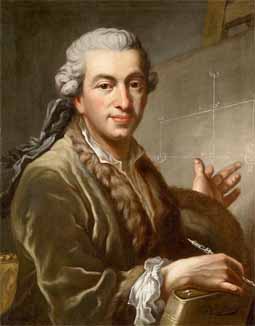 Pierre-Simon Laplace, 1749-1827 |
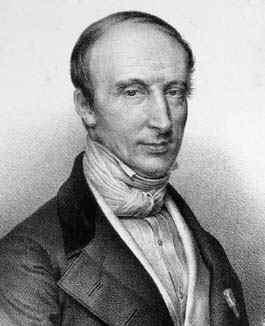 Augustin Louis Cauchy, 1789-1857 |
 Leonhard Euler, 1707-1783 |
 Pierre-Simon Laplace, 1749-1827 |
 Augustin Louis Cauchy, 1789-1857 |

COURSE NUMBER: MATH 2120
TIME: 1:20-2:40 TR; PLACE: Gilbreath 104
INSTRUCTOR: Robert "Dr. Bob" Gardner; OFFICE: Room 308F of Gilbreath Hall
OFFICE HOURS: 4:15-4:45 TR and by appointment; PHONE: 439-6979 (Math Office 439-4349)
E-MAIL: gardnerr@etsu.edu
WEBPAGE: Dr. Bob's faculty webpage
(see my webpage for a copy of this course syllabus, copies of the classnotes in PDF, and updates for the course).
TEXT: Introduction to Ordinary Differential Equations, 4th Edition by Shepley L. Ross (John Wiley and Sons, 1989).

SUPPLEMENTAL REFERENCES: For justification of several claims made in class, we will appeal to Shepley Ross' Differential Equations, 3rd Edition (John Wiley and Sons, 1984). This is not our textbook, but it includes all of the material of our textbook along with several additional chapters. The attraction for your instructor to Ross' Introduction to Ordinary Differential Equations is the availability of this strong supplemental reference. In addition, we will turn occasionally to Kenneth Howell's Ordinary Differential Equations: An Introduction to the Fundamentals, 2nd edition (CRC Press, 2019) for justification of results. A third supplemental reference is George Simmons' Differential Equations with Applications and Historical Notes, 3rd edition (CRC Press, 2023). We have some supplemental notes on applications based on this source.
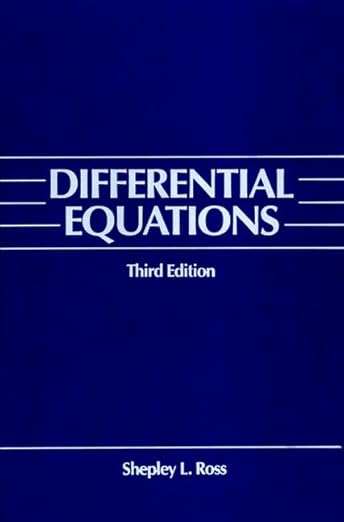
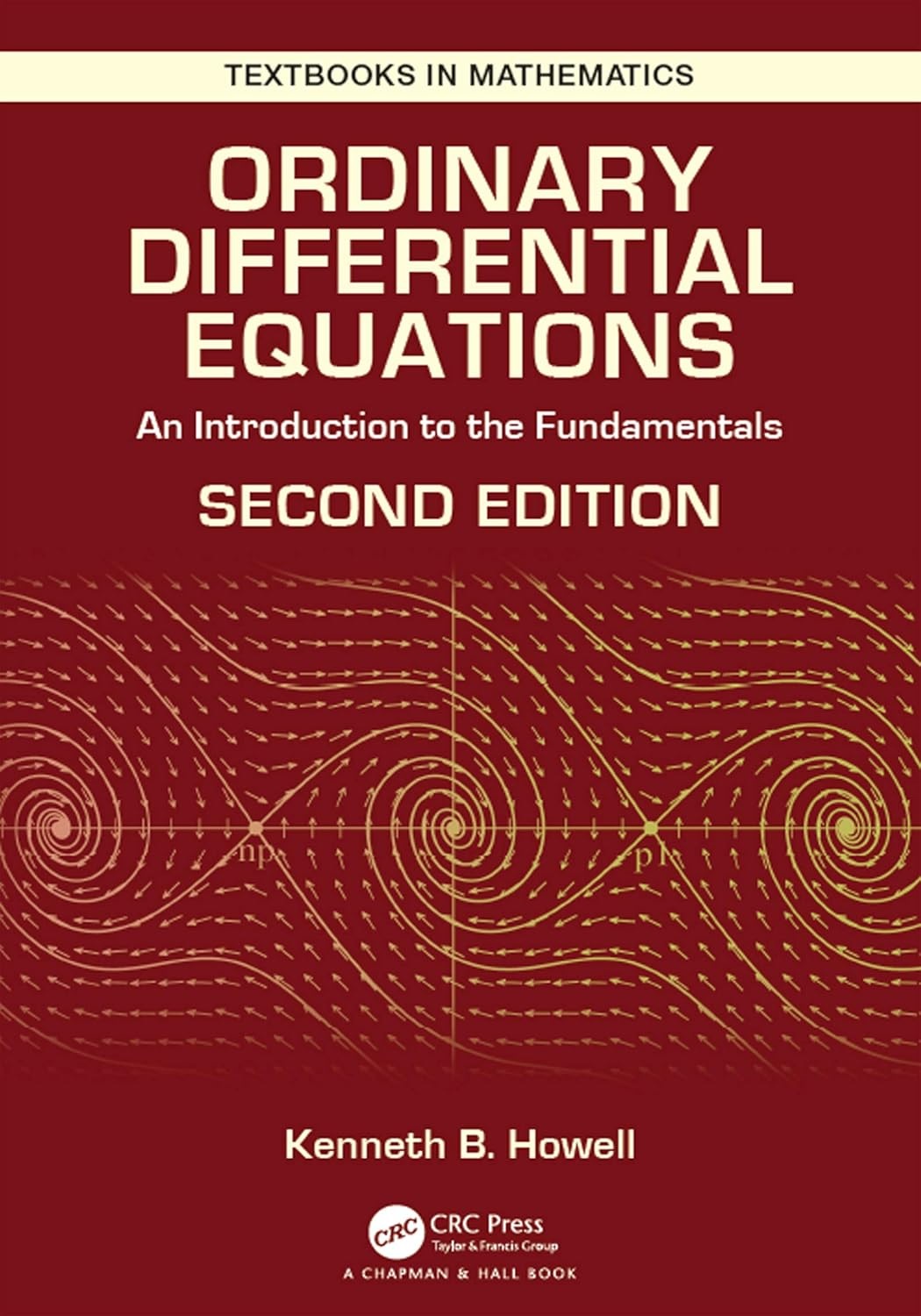
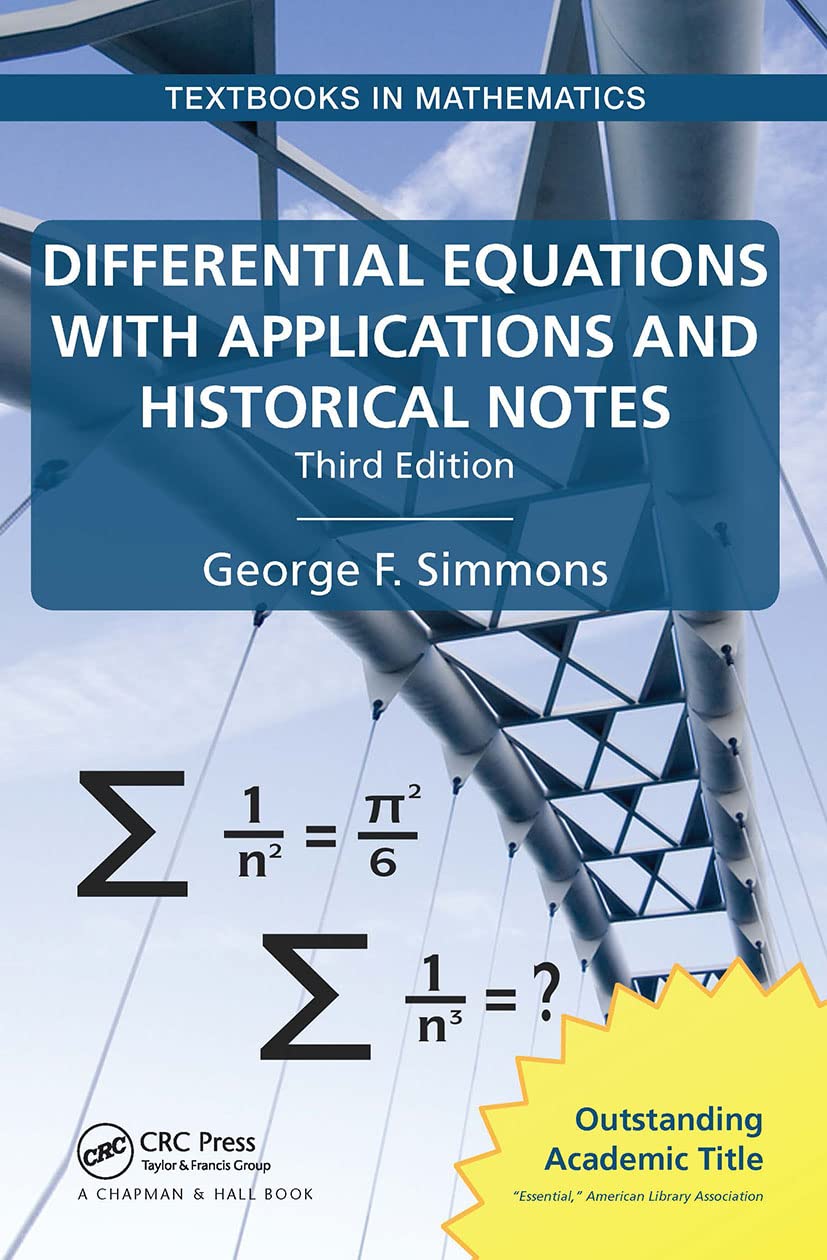
COURSE DESCRIPTION: The 2024-25 ETSU Undergraduate Catalog describes this course as: "Offers first order differential equations and applications; second and higher order linear differential equations and applications; Laplace transforms; and systems of differential equations." These topics are covered in Chapters 1, 2, 3, 4, 5, 7, and 9. This is ambitious! In practice, we will not have time to consider systems of linear differential equations (Chapter 7).
PREREQUISITE: The catalog states that the prerequisite is a C (2.0) or better in MATH 1920 [Calculus 2]. It is recommended but not required that students take MATH 2010 [Linear Algebra] before taking MATH 2120 [Differential Equations].
DESIRE2LEARN: I will not rely on the Desire2Learn ("D2L") website for the posting of notes and supplements; all of this material is freely available on my faculty webpage and does not require a login. I will use D2L to post your grades, my handwritten homework solutions, and recordings of class lectures.
CLASS NOTES: We will use projected digital notes for the presentation of definitions, worked examples, and proofs of some theorems. Copies of the notes are online. It is recommended that you either get printed copies of the notes or download the PDFs before the material is covered in class. This will save you from writing down most notes in class and you can concentrate on listening and supplementing the notes and examples with comments which you find relevant. You should read the online notes to be covered in class before each class (we will not have class time to cover everything in the notes; they are very thorough). Try to understand the examples and the meanings of the definitions. You should also read each relevant section of the book, paying particular attention to examples.
OUTLINE:
Our tentative outline is:
Chapter 1. Differential Equations and Their Solutions: Classification of DEs, ordinary differential equation ("ODE"), partial differential equation ("PDE"), order of a DE, linear ODE, nonlinear ODE, explicit and implicit solutions, one-parameter family of solutions, initial-value problem ("IVP"), boundary-value problem ("BVP"), initial condition, the Basic Existence and Uniqueness Theorem, brachistochrone problem, solution to the DE describing the brachistochrone.
Chapter 2. First-Order Equations for Which Exact Solutions Are Obtainable:
Exact differential, exact DE and its solution, Method of Grouping, integrating factor,
separable equations and their integrating factor, homogeneous first-order DE, transforming a homogeneous first order DE into a separable DE, first order linear DE, Bernoulli differential equation, transformation of a Bernoulli DE into a linear equation.
Chapter 3. Applications of First-Order Equations:
Problems in mechanics, Newton's Second Law of Motion, Newton's Universal Law of Gravitation, velocity, acceleration, coefficient of friction, exponential growth and decay, half-life and doubling time, Newton's Law of Cooling, logistic growth, mixture problems,
derivation of the DE describing a hanging cable or chain, the catenary.
Chapter 4. Explicit Methods of Solving Higher-Order Linear Differential Equations:
Linear DE of order n, nonhomogeneous term, homogeneous, the Existence and Uniqueness Theorem, Basic Theorem on Linear Homogeneous Differential Equations, Wronskian, complementary function/particular integral/general solution, auxiliary equation, solutions of homogeneous linear DEs with constant coefficients, the Method of Undetermined Coefficients, variation of Parameters, Cauchy-Euler equation, existence and uniqueness of a solution to a second order homogeneous DE.
Chapter 5. Applications of Second-Order Linear Differential Equations with Constant Coefficients:
Springs suspended vertically, mass, force of gravity, spring constant, restoring force, natural length of a spring, resisting force, damping constant, external impressed forces, free undamped motion, simple harmonic motion, amplitude, frequency, the pendulum equation and its approximate solution, free damped Motion, damped oscillatory motion, critical damping, overcritical damping, forced motion.
Chapter 9. The Laplace Transform:
Definition of and existence of the Laplace transform, linear property, Laplace transforms of derivatives, the inverse transform, convolution, the Convolution Theorem, the use of tables of Laplace transforms and inverse transforms to solve IVPs.
GRADING: Your grade will be determined by the average on four tests T1, T2, T3, T4. The test will be spaced at 3 or 4 week intervals and the fourth test will be given during finals week. Your average is determined by:
HOMEWORK: Every class, a set of a few homework problems from the book will given. These will not be collected, but any questions on them will be addressed during the following class. It is imperative that you work on these problems!!! This is really how you learn the material, and the tests will be largely based on these problems (or ones very similar to them). These problems can be time consuming, so you don't want your first attempt at working such problems to come during a test! My handwritten solutions to the homework problems will be posted on D2L.
Homework Problems: If we can stick to our schedule, then the following are the "assigned homework problems." Click on the problem numbers to bring up a PDF of the statements of the problems.
| |
||
| |
||
| |
||
| |
||
| |
||
| |
||
| |
Reducible to This Form |
|
| |
||
| |
||
| |
||
| |
||
| |
D.1, D.3, D.9 |
|
| |
Constant Cofficients |
|
| |
||
| |
||
| |
||
| |
||
| |
||
| |
||
| |
of Laplace Transform |
B.1, B.5, B.7, B.9, B13, B.17 |
| |
B.1, B.3 |
|
| |
with Constant Coefficients |
ROUGH SCHEDULE: We'll try to adhere to the following schedule... this may have to be revised.
ACADEMIC MISCONDUCT: Once you start a test, you must stay in the room until you complete it or until the class time is over. If you have a documented medical need to leave class during the test then this will, of course, be honored (provided you give me the documentation before hand). I will provide all paper for the tests. You will only need a pencil and eraser. You will put your backpack at the front of the classroom during the test and your phone will be placed on the table at the front of the room (so please make sure you have the phone silenced). Cheating on a test will result in a grade of 0 on that test. This is an example of academic misconduct and I will have to act on this as spelled out on ETSU's Academic Integrity @ ETSU webpage (last accessed 1/16/2025). When such a charge is lodged, the dean of the College of Arts and Sciences is contacted. Repeated or flagrant academic misconduct violations can lead to suspension and/or expulsion from the university.
SUPPLEMENTAL REFERENCES: Some interesting videos on general mathematics are the following.
SYLLABUS ATTACHMENT: You can find an on-line version of the university's syllabus attachment (which contains general information concerning advisement, honor codes, dropping, etc.; accessed 1/16/2025).
ZOOM AND REMOTE ATTENDANCE: A ZOOM meeting is set up for each lecture through D2L. I encourage you to attend the in-person lectures if possible, but if you need to attend though ZOOM then that is fine. In particular, if you are unwell, please consider the Zoom-alternative to attending class in person. You can ask questions through D2L and I will respond, just like in class. These ZOOM meetings will be recorded and posted on D2L, so they can be viewed later as well.
CAMPUS SAFETY: East Tennessee State University is dedicated to creating a safe and healthy environment for all students, faculty, staff, and visitors by fostering a strong culture of safety that extends beyond compliance with regulations. All members of the ETSU community play a crucial role in this shared responsibility. You are encouraged to report any issue without fear, ensuring a supportive environment. As Buccaneers, make safety a priority and contribute to a positive, productive campus community by:
IMPORTANT DATES: (see the official ETSU calendar for more details; accessed 1/16/2025):
Return to Dr. Bob's webpage
Last updated: October 21, 2025.